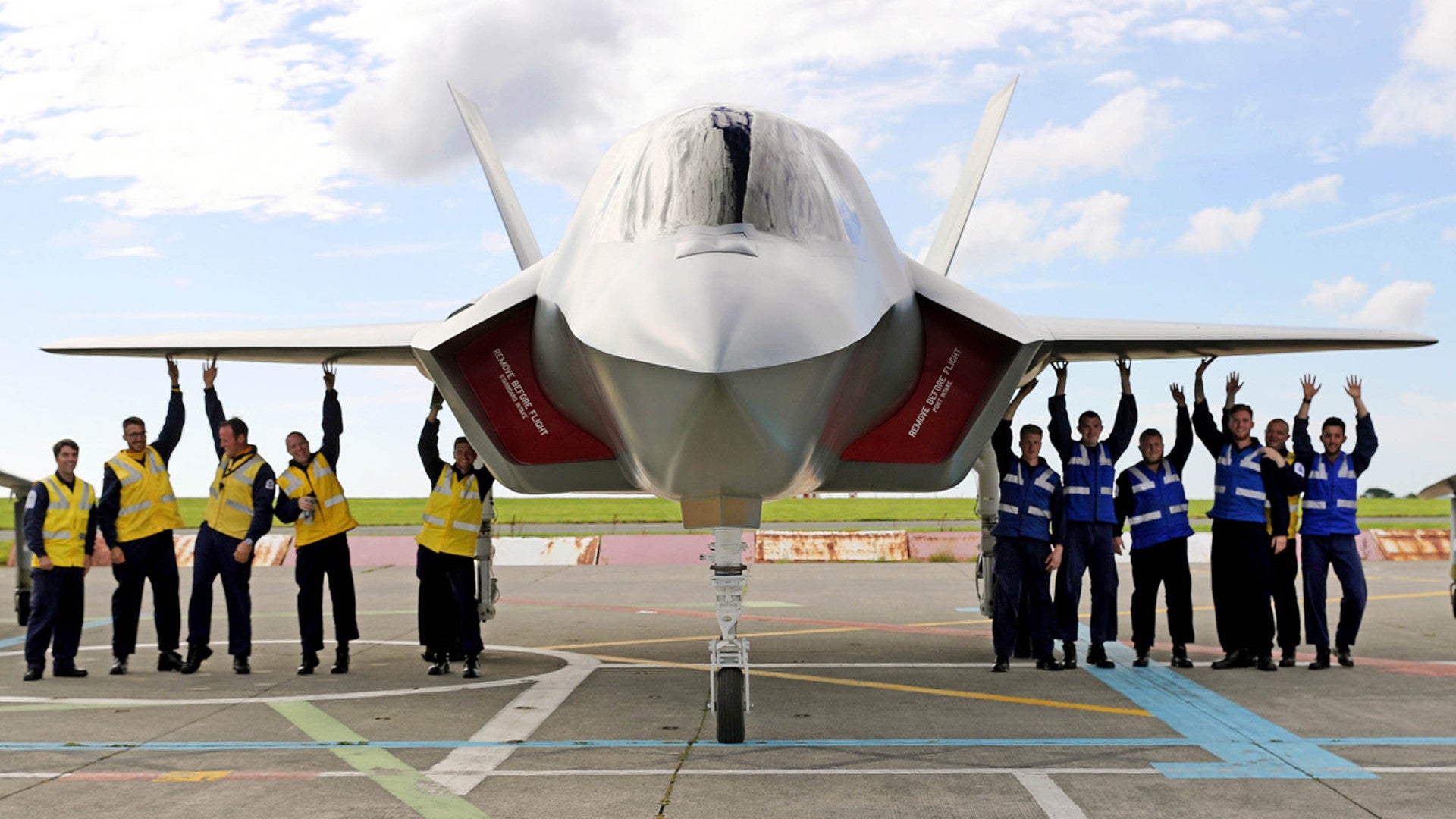As the Royal Navy’s newest carrier, HMS Queen Elizabeth, begins her initial sea trials in the North Sea, further south personnel are training to eventually join her air wing. With the United Kingdom having only received a small number of F-35B Joint Strike Fighters so far, all of which are in the U.S., these future flight deck crews are practicing with a “mini air force” that includes four full-scale mockups of the stealthy jets.
On June 28, 2017, the Royal Navy revealed these impressive substitutes had previously joined the training force at Royal Naval Air Station Culdrose, which is situated on Cornwall’s Lizard Peninsula. With the F-35B slated to be Queen Elizabeth’s primary weapon when she enters service in 2026, it’s essential that sailors get a chance to work with something similar now.
“To be ‘carrier-ready, we need to practice moving all different shapes and sizes of aircraft,” Royal Navy Chief Petty Officer Paul Ranson, who leads the training program at Culdrose and will eventually take over as Queen Elizabeth’s Captain of the Flight Deck, told the service’s reporters. “Ninety-nine percent of handlers have never been near an F-35B yet or moved anything nearly that large on a flight deck.”
Made by Gate Guards UK, the model jets – reportedly nicknamed “the faux fighters” – are non-flying, but replicate many of the Joint Strike Fighter’s basic features, such as its undercarriage. This allows trainees to practice hooking them up to tugs and pulling them around on the tarmac.
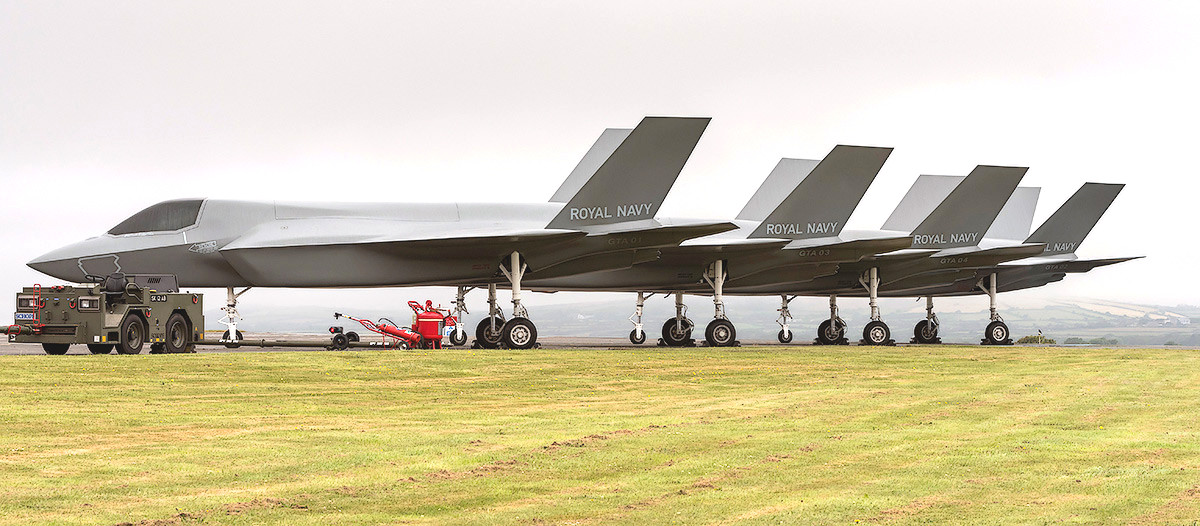
Crews can fill large tanks inside the predominantly fiberglass training aids with water in order to up the total weight to between 16 and 24 tons in order to simulate varying loads of fuel and ordnance. Two of the four have realistically opening canopies so teams can practice getting an injured pilot out of the cockpit in an emergency.
“We need to provide as realistic training as possible before the trainees go to sea,” Ranson added. “There is no margin for error when operating with live aircraft on a real flight deck at sea.”
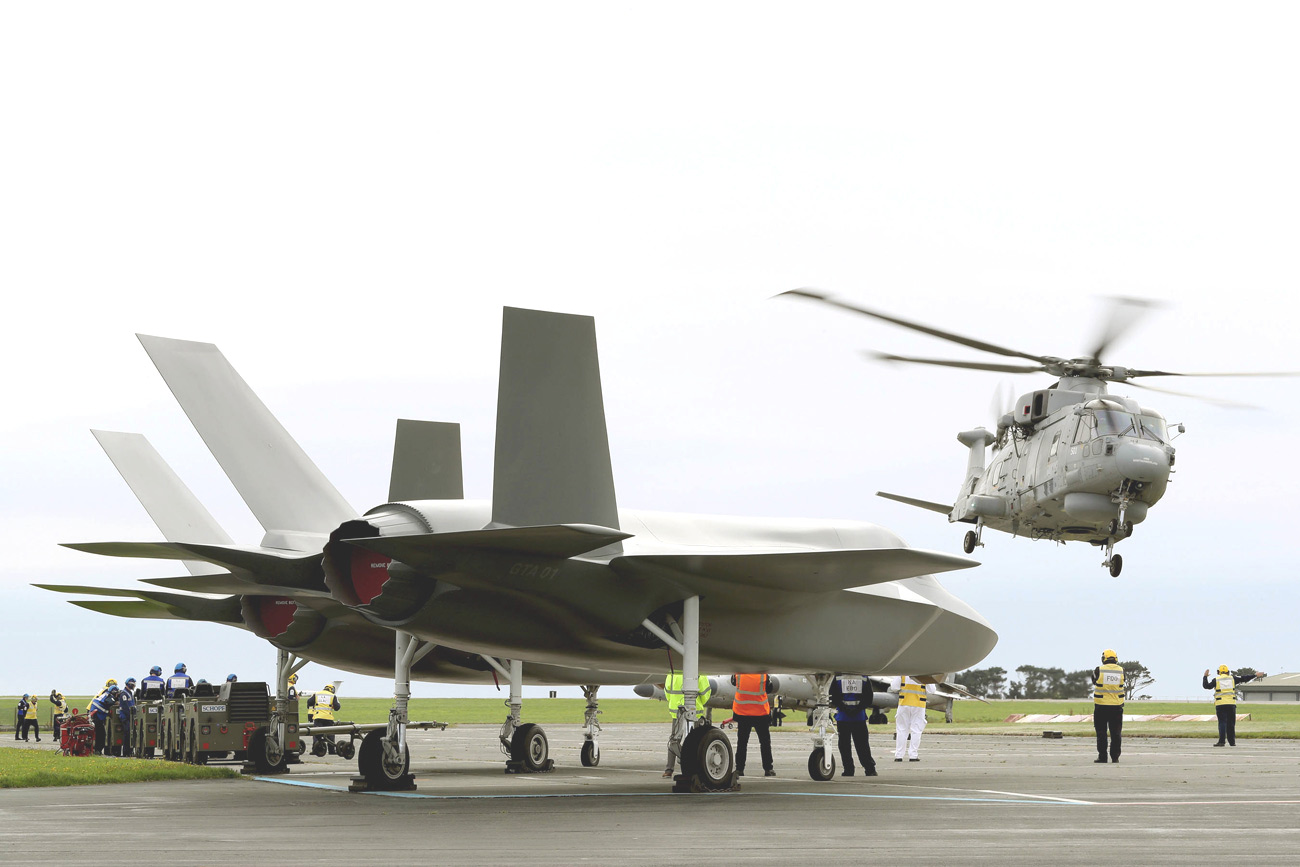
Of course, Ranson and his charges have few other options for reasons we at The War Zone explored in depth in our profile of the Queen Elizabeth’s first trip out to sea. To make a long story short, in light of the Joint Strike Fighter programs delays and increasing costs, the U.K. Ministry of Defense continues to review just how many of the fighters it intends to buy in total for both the Royal Air Force (RAF) and the Royal Navy’s Fleet Air Arm. The U.K.’s defense establishment has not yet offered an official estimate for how much it expects its full Joint Strike Fighter purchases to cost and it is unclear how much it has already invested in the American-led program.
As of January 2017, the United Kingdom was still officially committed to at least purchasing 138 jets. However, in June 2017, The Times of London reported that the Fleet Air Arm might ultimately receive as few as 48 F-35Bs. The present configuration of the Queen Elizabeth-class – which will include the namesake ship and her sister HMS Prince of Wales – only supports short/vertical takeoff and landing capable aircraft such as the Joint Strike Fighter’s B model, as well as helicopters. Manufacturer Lockheed Martin says it has delivered and has on order fewer than 10 of the stealthy jets in total to the United Kingdom. All of these are or will be committed to flight training and developmental duties.
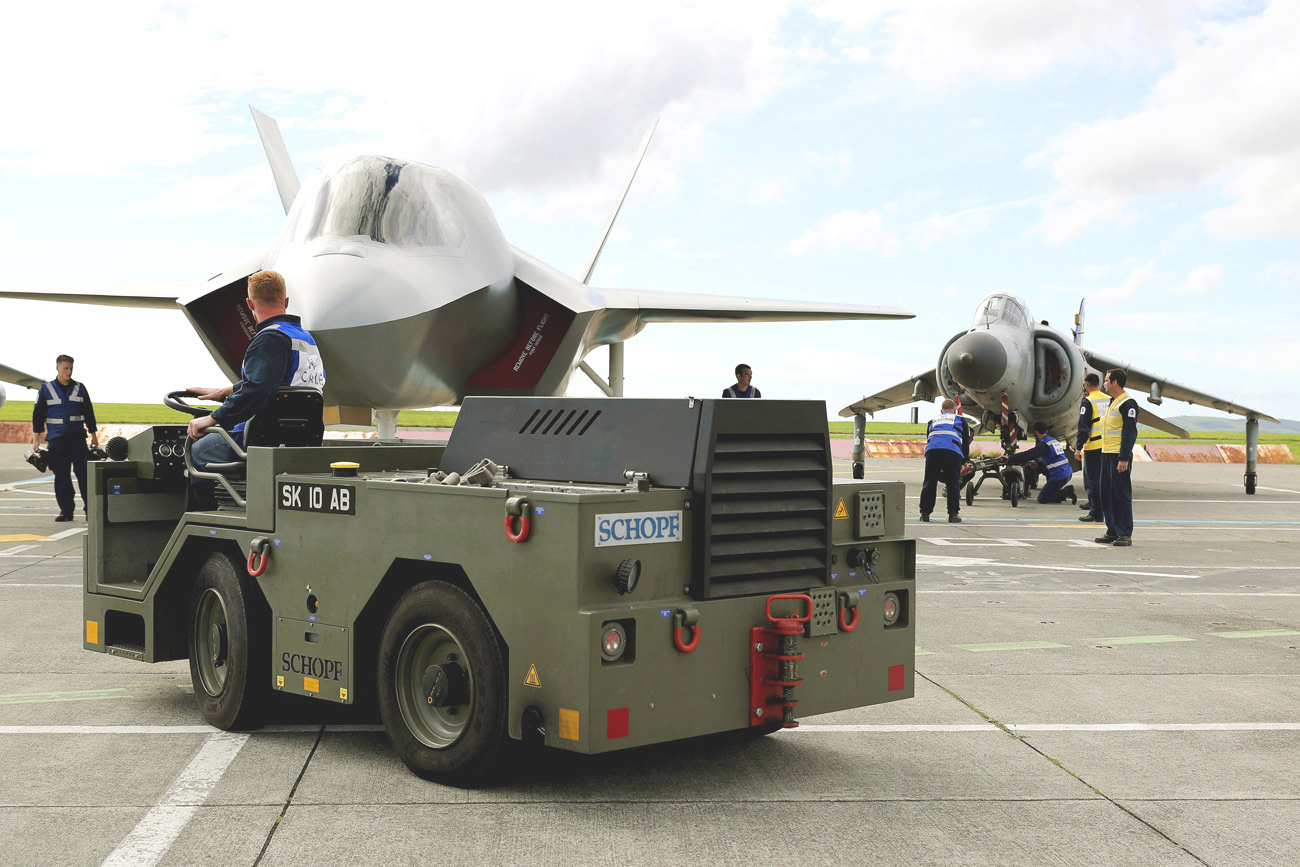
So, before the fiberglass substitutes arrived, the deck handling trainees had been running through their practice sessions with a relatively ad hoc group of aircraft including at least one tired, “unwanted” Sea Harrier jump jet. The aircraft is at least semi-functional, able to run up its engine enough to give crews a sense of the “the noise and the smell” of working on an actual flight deck, according to Ranson. He noted that the aircraft was no representative in any other way of the F-35B, which is substantially larger and heavier.
“The new training aids are really life-like and above all they give a sense of realism to the training here,” Ranson explained. “To have these life-size replicas of the real thing is so important, invaluable actually.”
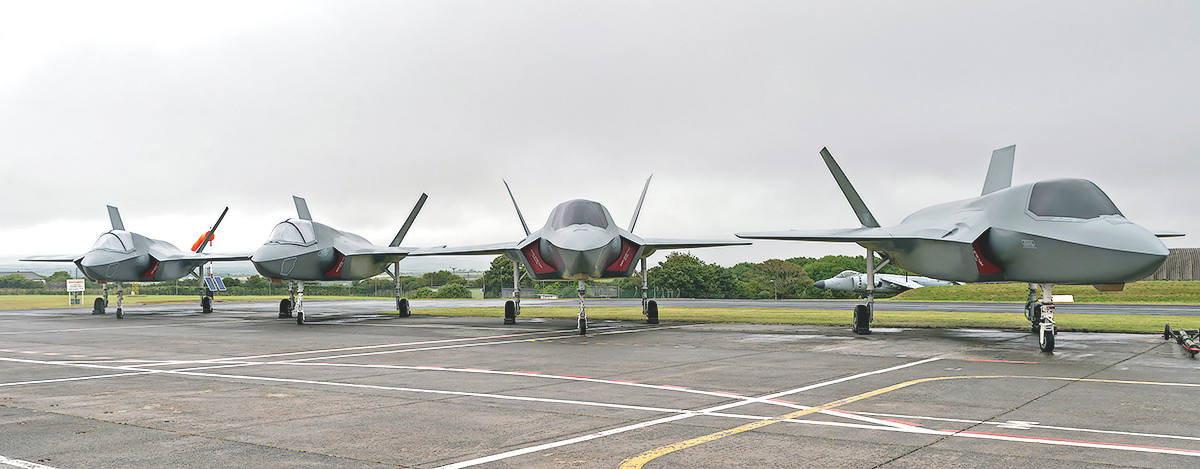
Pictures show that even with the new mockups, crews are still working with the Sea Harrier, which is more than a little ironic. In a particularly controversial decision, the Royal Navy sold off nearly all of these perfectly good jump jets after retiring its last aircraft carrier, the HMS Ark Royal, in 2011. Maintaining these aircraft would have guaranteed the new flattops had at least some fixed-wing capability if there were delays in getting sufficient numbers of F-35s.

Now, even with the Queen Elizabeth now out for her first set of open sea evaluations, the service effectively has no fixed-wing aircraft ready for carrier operations. Officials actually put another fiberglass model, this one from Lockheed Martin itself, on the ship’s deck during its official naming ceremony back in 2014. The training program at Culdrose does have at least one Merlin helicopter for personnel to practice with, a type that is in active service and will be another important part of future carrier air wings.

The Royal Navy does hope to integrate real F-35Bs into the practice sessions as soon as they’re available. The U.K. Ministry of Defense’s Strategic Defense and Security Review in 2015 stated that the RAF and Royal Navy should be sharing a fleet of at least 42 jets by 2023, with 18 set aside specifically for various training purposes.
In the meantime, the faux fighters at Culdrose will continue to be an essential tool to prepare sailors for their future duties aboard Queen Elizabeth and Prince of Wales.
Contact the author: joe@thedrive.com
